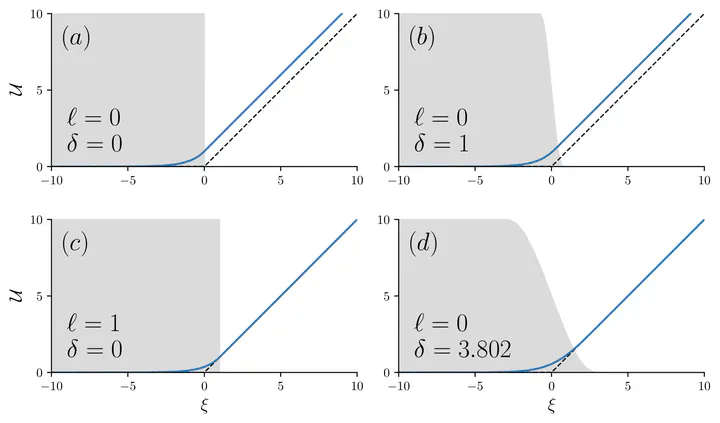Improving convergence of volume penalised fluid-solid interactions
 We derive simple corrections to improve convergence of the volume-penalty method to second order.
We derive simple corrections to improve convergence of the volume-penalty method to second order.Abstract
We analyse and improve the volume-penalty method, a simple and versatile way to model objects in fluid flows. The volume-penalty method is a kind of fictitious-domain method that approximates no-slip boundary conditions with rapid linear damping inside the object. The method can then simulate complex, moving objects in general numerical solvers without specialised algorithms or boundary-conforming grids. Volume penalisation pays for this simplicity by introducing an equation-level error, the $\textit{model error}$, that is related to the damping time $\eta \ll 1$. While the model error has been proven to vanish as the damping time tends to zero, previous work suggests convergence at a slow rate of $\mathcal{O}(\eta^{1/2})$. The stiffness of the damping implies conventional volume penalisation only achieves first order numerical accuracy. We analyse the volume-penalty method using multiple-scales matched-asymptotics with a signed-distance coordinate system valid for arbitrary smooth geometries. We show the dominant model error stems from a displacement length that is proportional to a Reynolds number $\text{Re}$ dependent boundary layer of size $\mathcal{O}(\eta^{1/2}\text{Re}^{-1/2})$. The relative size of the displacement length and damping time leads to multiple error regimes. Our key finding derives a simple smoothing prescription for the damping that eliminates the displacement length and reduces the model error to $\mathcal{O}(\eta)$ in all regimes. This translates to second order numerical accuracy. We validate our findings in several comprehensive benchmark problems and finally combine Richardson extrapolation of the model error with our correction to further improve convergence to $\mathcal{O}(\eta^{2})$.
Type
Publication
Journal of Computational Physics